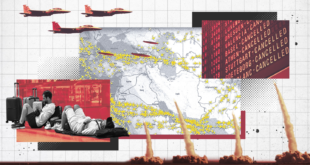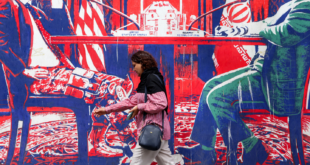Angry demonstrators torched petrol stations and long queues formed at heavily-guarded fuel pumps Wednesday after oil-rich Iran announced the start of fuel rationing, triggering nationwide protests.Motorists trying to stock up on fuel clashed with armed police after the surprise announcement rationing would take effect from midnight Tuesday.
Shouting “[President Mahmoud] Ahmadinejad must be killed”, stone-throwing demonstrators set ablaze a car and petrol pumps at a service station in a residential area of northwestern Tehran late on Tuesday.
It is the first such open outpouring of anger since Ahmadinejad took office in 2005, although criticism has mounted in some economic circles that his policies were fuelling inflation and hurting the poor.
Tehran fire service spokesman Behrouz Tashakor said the city’s firefighting teams had reported 12 petrol stations ablaze, according to the Fars news agency.
Iran, OPEC’s number two oil producer and the fourth in the world, announced on Tuesday that rationing aimed at reducing colossal state petrol subsidies and massive consumption would extend to private cars and taxis.
But reformist and moderate lawmakers were pushing for legislation to halt the plan, while Interior Minister Mostafa Pour-Mohammadi and Oil Minister Kazem Vaziri Hamaneh were to brief parliament on the situation in a closed session. Long queues of cars, some several kilometres long, snaked from petrol stations in Tehran and across the country as armed police stood guard. In some areas, people turned up with buckets to fill up with fuel.
“One day the government says rationing has been postponed, the next they say they are going ahead with it, that explains the long queues and violence,” said one petrol station manager, identifying himself only as Ghanei.
State television gave the announcement just a few hours before it came into force at midnight.
It said private cars using petrol would be limited to 100 litres of petrol a month while those using petrol and liquefied gas would only be allowed 30 litres. The rationing would continue for four months and might be extended further to six months.
Separate higher quotas have been introduced for municipal yellow taxis and privately-run taxis, both essential means of transport.
Iran has about seven million mostly ageing, fuel-inefficient cars, more than a million of them clogging the roads in Tehran where an official once described the level of pollution as “collective suicide”. Cheap prices have encouraged such consumption that the government ironically had to spend $5 billion importing petrol in the last financial year ended March.
Its refining capacity covers only 60 per cent of its needs, while smugglers also illegally take cheap petrol out of the country to neighbouring states where pump prices are far higher.
Iran launched the first phase of the rationing plan two weeks ago, initially targeting only government vehicles.
Last month, it also raised pump prices by 25 per cent, to around 10 cents per litre, for a commodity that still costs less than a comparable amount of mineral water.
Iran estimates that without rationing, fuel imports could reach $9.5 billion a year. It produces 44.5 million litres of petrol a day but consumption is 79 million.
Under Tuesday’s plan, the maximum amount of petrol allowed in total for the four-month period is 400 litres for petrol-burning cars and 120 litres for those which consume both liquefied gas and petrol.
Ahmadinejad has been criticised by the reformist press for stoking already high inflation with high spending and promising lavish local investment projects.
Earlier this month, more than 50 economists wrote an open letter warning Ahmadinejad about the effects of his economic policies on society.
However, the president, who was elected on a platform of distributing the country’s riches more evenly, insists inflation is under control and that the government is doing all it can to reduce poverty.
The central bank has predicted inflation will rise to 17 per cent in the year to March 2008 and some economists expect it could be even higher.
 Eurasia Press & News
Eurasia Press & News


